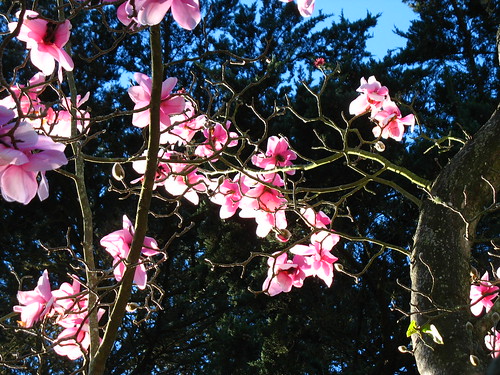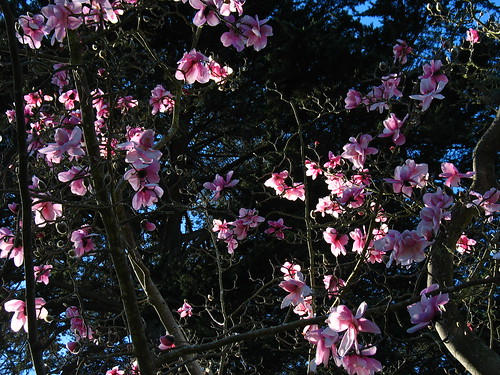
On M. campbellii, famed Bay Area botanist Elizabeth McClintock wrote, "[The flower's] innermost tepals form an erect, conelike covering that encloses the central column of stamens and pistils; the remaining tepals spread horizontally. It is this characteristic 'cup-and-saucer' flower shape that distinguishes Campbell's magnolia from other deciduous Asiatic magnolias." (Weird--Amazon scanned the back cover of McClintock's book.)
So how do the flowers get pollinated if fleshy tepals enclose the sex parts? "Magnolias are among the oldest of flowering plants, having evolved more than sixty-five million years ago when earth was dominated by ferns and conifers... Beetles, ancient forms of insect life, are thought to be the original pollinators of magnolias, feeding on both the plentiful pollen and the sweet tissue of the [tepals]." Ibid.
Another shot of the same tree, looking more cup-and-saucery.


1 comment:
Beautiful flowers! Lucky to see any after a windstorm...the buds must have been closed when the wind was whipping.
Post a Comment